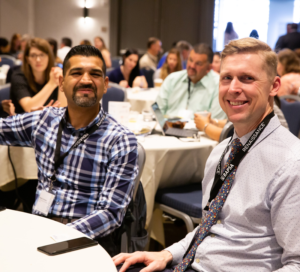
Transformative Practices as a RAPSA Forum 2024 strand aims to engage practitioners, researchers and policymakers around high-leverage instruction, student engagement, transformative pedagogy, supportive learning environments, work-based learning, and CTE that foster student engagement and drive improved educational outcomes for At-Promise students.
The goal for this strand is to effectively and efficiently meet the needs of all At-Promise students. This means being able to understand the various teaching strategies, maintain supportive relationships and environments as well as strategically analyzing the educational structures and making adjustments as needed. Some ways individuals are implementing this strand is through active student engagement, work based learning and CTE programs that improve the educational and professional outcomes for At-Promise students.
The remainder of the article will highlight the various ways some educators are implementing these strategies and practices to best benefit their students. Career Technical Education (CTE) Pathways for example have been extremely beneficial for students preparing for graduation. According to the California Department of Education CTE programs, “encourages students to see a high school diploma and readiness for college or other postsecondary study as a foundation for the future rather than as an end in and of itself.” CTE Pathways help set students up with career readiness skills to achieve success after high school.
Modesto City School District in Modesto, California, for example, provides students with Alternative Education and offers CTE Pathways. According to their district website, they have a range of “options to provide alternatives to students who are significantly down credits, at-risk of dropping out, who wish to accelerate, who have unique circumstances, or those who for a variety of reasons have not experienced success in the traditional comprehensive structure.” In regards to CTE, they offer an array of programs that “combine academic knowledge with technical skills and application of learning in hands-on, real-life contexts to prepare students with viable skills for today’s increasingly complex workforce.”
Another district implementing the use of CTE Pathways is Yuba City. For example, Yuba City High School offers their students with over ten different types of pathways ranging from food services to engineering. As stated on their website CTE Programs “combine academic knowledge with technical skills and application of learning in hands-on, real-life contexts to prepare students with viable skills for today’s increasingly complex workforce.”
By implementing these programs and resources these districts are helping to increase all students' success and ensure they are ready for the next chapter of their lives. Making these shifts and efforts to provide alternative education and career readiness support makes all the difference. The RAPSA 2024 Forum is all about bridging the gaps that have been made and ensuring all students receive equitable access to quality education and beyond.
